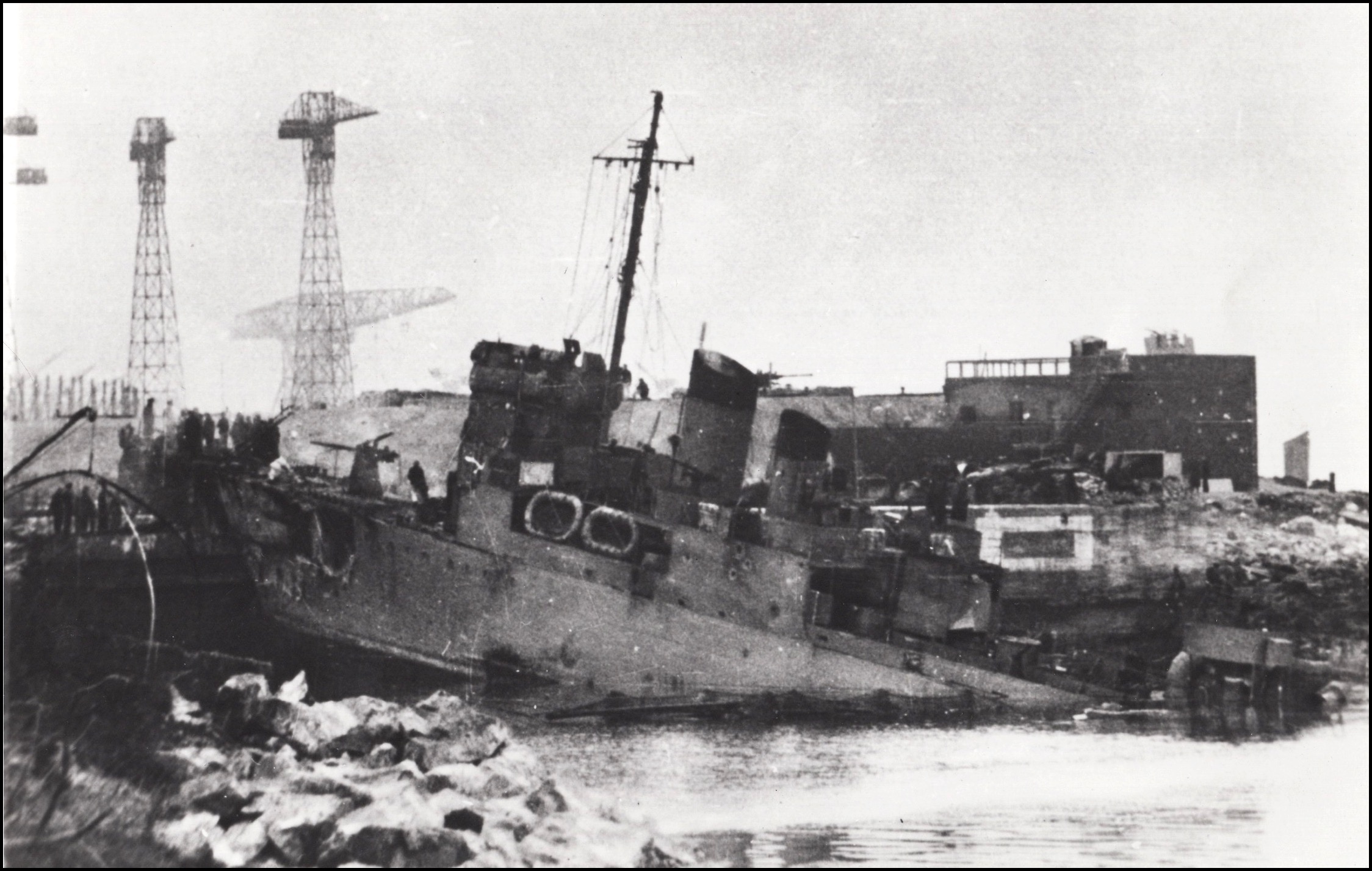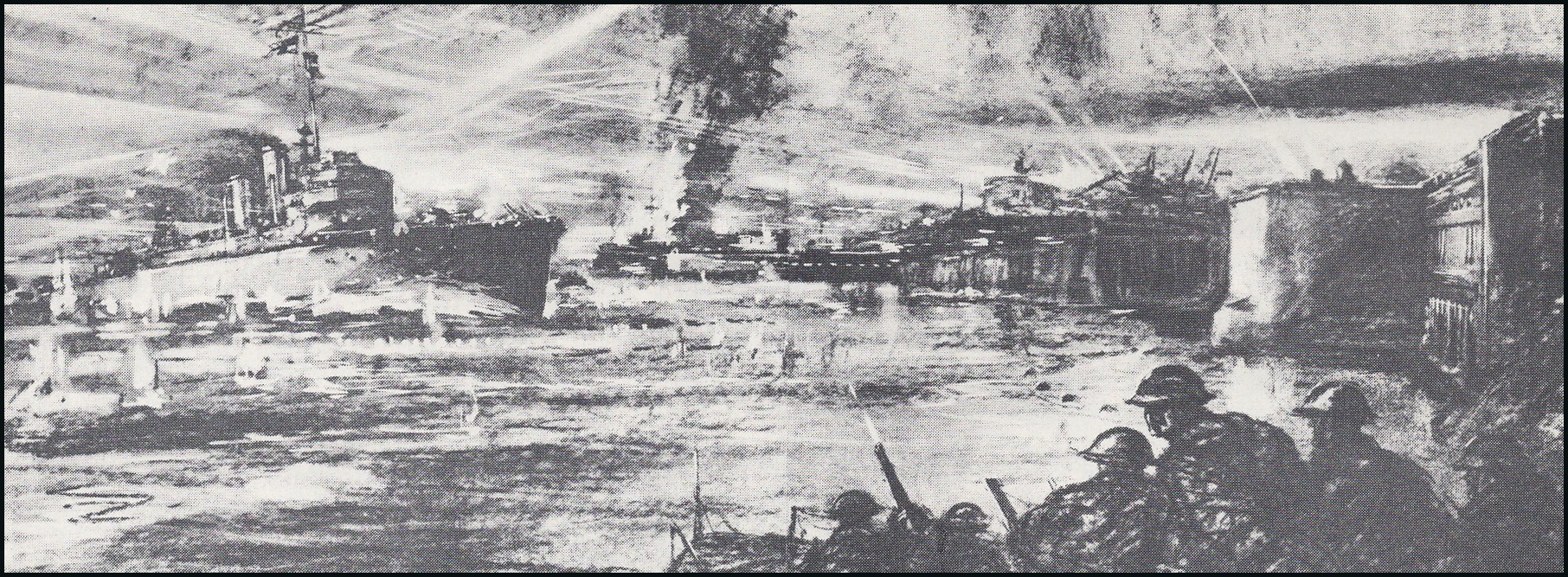The rare and important Second War St. Nazaire raid D.S.C. group of seven awarded to Lieutenant-Commander (E.) W. H. Locke, Royal Navy, who was Warrant Engineer aboard H.M.S. Campbeltown and taken P.O.W. after the loss of M.L. 177 Distinguished Service Cross, G.VI.R., reverse officially dated ‘1945’, hallmarks for London 1948; 1939-45 Star; Atlantic Star; Africa Star; War Medal 1939-45; Korea 1950-53, 1st issue (Lt. Cdr. W. H. Locke. R.N.); U.N. Korea 1950-54, unnamed, mounted court-style as worn, good very fine or better (7) £30,000-£40,000 --- Importation Duty This lot is subject to importation duty of 5% on the hammer price unless exported outside the UK --- --- Provenance: Dix Noonan Webb, June 2008. D.S.C. London Gazette 11 September 1945: ‘For gallantry, determination and devotion to duty in H.M.S. Campbeltown in the raid on St. Nazaire in March 1942.’ Wilfrid Harry Locke was born in Surrey on 5 March 1910 and entered the Royal Navy in January 1926. Appointed as a Warrant Engineer in October 1941, he was placed in charge of the engine-room of the former American four-stacker Campbeltown in early 1942, which ship had been allocated a key role in forthcoming Operation ‘Chariot’, namely to ram the southern caisson of the Normandie Dock in St. Nazaire, laden with delayed action explosives, thereby destroying the facility and denying the Tirpitz use of the only suitable dry-dock on the Atlantic coast. Accordingly, over a two-week period in March 1942, the Campbeltown was fitted out at Devonport and outwardly altered to resemble a German Mowe-class torpedo boat, while internally she was fitted with a special tank containing four tons of T.N.T. and eight-hour delay fuses, which were to be activated two hours before she reached the Normandie Dock. Setting out on her final voyage with the raiding force on 26 March, she took over as Force Leader shortly after midnight on the 28th, when seven and a half miles remained in the run up the Loire. Finally, at about 0130, with less than two miles to go, the German defences awoke. C. E. Lucas Phillips takes up the story in The Greatest Raid of All: ‘A continuous stream of projectiles of all sorts was now striking the Campbeltown, but so violent was the sound of our own weapons that the ring of bullets on her hull and the crack of small shells was hardly noticed; but when larger shells shook her from stem to stern none could be unaware, and what every survivor was to remember for ever afterwards was the unchecked glow of the darts of red and green tracer flashing and hissing across her deck and the quadruple whistle of the Bofors shells. Bullets penetrated her engine and boiler-rooms, ricocheting from surface to surface like hornets, and Locke, the Warrant Engineer, ordered hands to take cover between the main engines of the condensers, except for the throttle watchkeepers ...’ With 200 yards to go a searchlight fortuitously illuminated the check-point of the lighthouse on the end of the Old Mole, enabling Lieutenant-Commander S. H. Beattie on the Campbeltown’s bridge to correct his aim on the caisson. Having then ploughed through the steel anti-torpedo net, the old four-stacker closed on her collision course at 20 knots, and every man aboard braced himself for the impact. At 0134 the Campbeltown crashed into the gate, rearing up and tearing the bottom out of her bows for nearly 40 feet. Commando assault and demolition parties streamed ashore, while below the sea cocks were opened to ensure the Germans could not remove her before she blew up. As she settled by the stern, Beattie evacuated the crew via M.G.B. 314, and Lieutenant Mark Rodier’s M.L. 177. Locke and Beattie, with some 30 or more of Campbeltown’s crew boarded the latter, and started off down river at 0157 hours. Lucas Phillips continues: ‘The boat was embarrassingly overcrowded but Winthrop, Campbeltown’s doctor, helped by Hargreaves, the Torpedo-Gunner, continued to dress and attend to the wounded both above and below deck. Very soon, however, they were picked up again by the searchlights lower down the river and came under fire from Dieckmann’s dangerous 75mm and 6.6-inch guns. Rodier took evasive action as he was straddled with increasing accuracy. The end came after they had gone some three miles. A shell ... hit the boat on the port side of the engine-room lifting one engine bodily on top of the other and stopping both. Toy, the Flotilla Engineer Officer, went below at once. Beattie left the bridge and went down also. He had no sooner left than another shell hit the bridge direct. Rodier was mortally wounded and died a few minutes afterwards ... The engine room was on fire, burning fiercely, and the sprayer mechanism for fire-fighting had also been put out of action. Toy, who had come up momentarily, at once returned to the blazing compartment but was never seen again. Locke, Campeltown’s Warrant Engineer, was able partially to repair the extinguisher mechanism. The flames amidships divided the crowded ship in two, but the ship’s company continued to fight the fire for some three hours by whatever means available. At length, when all means had failed and the fire had spread throughout the boat, the order to abandon ship was given at about 5 a.m. One Carley raft had been damaged, but few of the wounded ratings were got away on the other, and the remainder of those alive entered the icy water, many of them succumbing to the ordeal. All of Campbeltown’s officers were lost except Beattie and Locke, among those who perished being the brilliant and devoted Tibbets, to whose skill and resourcefulness the epic success of the raid was so much due and whose work was soon to be triumphantly fulfilled.’ Locke and the other survivors were rounded up by the Germans by 0930 hours, which was expected to be the last possible time for the acid-eating, delayed action fuses in Campbeltown to work. Thus it was with all the more satisfaction that at 1035 hours the British prisoners, gathered together in small groups across the St. Nazaire area, heard the terrific explosion which blew in the caisson and vaporised Campbeltown’s bows. The stern section was swept forward on a great surge of water and carried inside the Normandie Dock where it sank. Thus, the main goal of the operation was achieved for a cost of 169 dead and about 200 taken P.O.W., many of them wounded, out of an original raiding force of 611 men. Yet only six of Campbeltown’s gallant crew were eventually decorated, Beattie being awarded the Victoria Cross. For his own part, the wounded Locke was hospitalised at Le Baule and Rennes, prior to being transferred to Marlag und Milag Nord camp at Tarnstedt at the end of April 1942. Nor was he a willing prisoner, official records revealing his part in the digging of a 130ft. tunnel from the camp’s dining room in September 1943, as part of a team of 30 men. That having been discovered by the enemy, he joined a team of 60 men in April 1944 in digging another tunnel parallel to the old one, but this too was discovered when a section of the roof collapsed. He also volunteered to make a hasty exit by wire cutting, but this plan was vetoed by the Escaping Committee. His award of the D.S.C. was not gazetted until after his liberation, a distinction that prompted his former boss, Lord Mountbatten, to write in person: ‘From my personal knowledge as Chief of Combined Operations, I know how well deserved this recognition is and am delighted to see that the part you played in such a hazardous expedition has been recognised nearly four years afterwards. I hope that you have fully recovered from your captivity and should like to wis...












